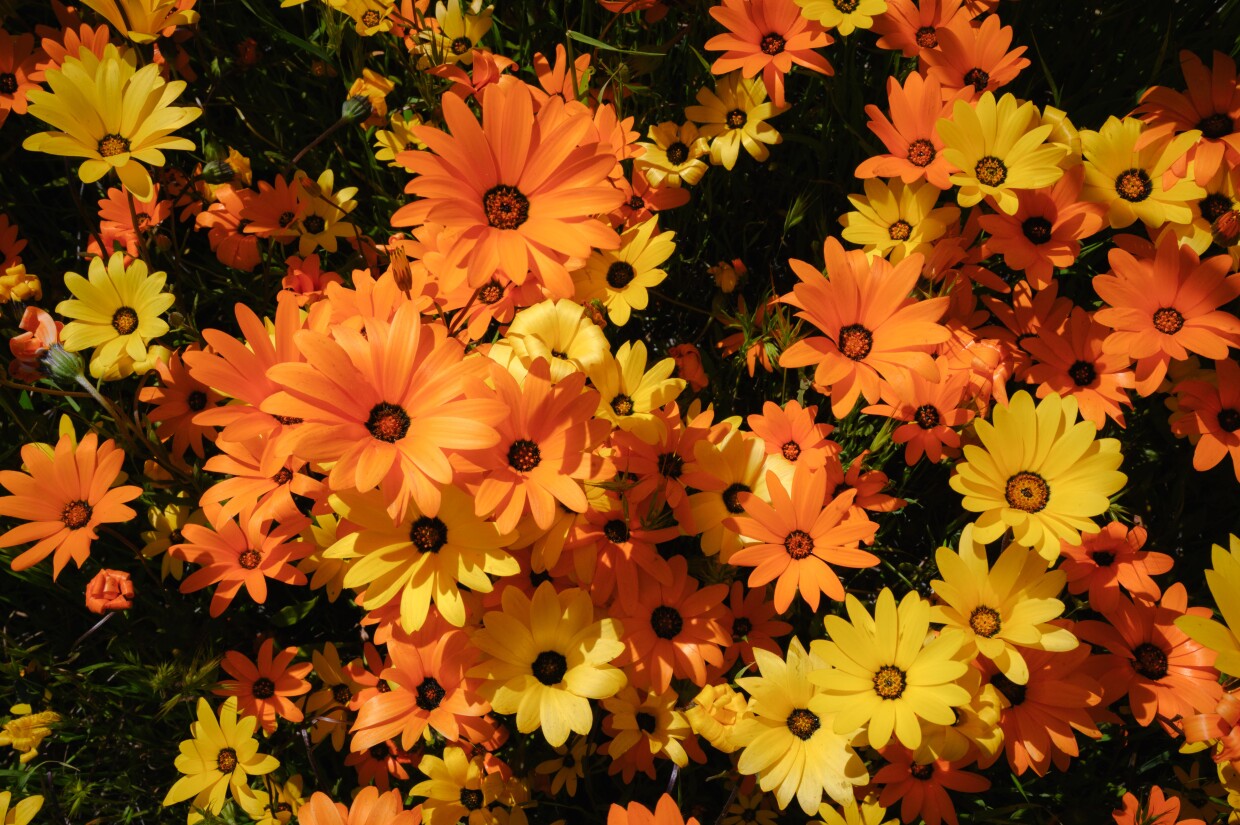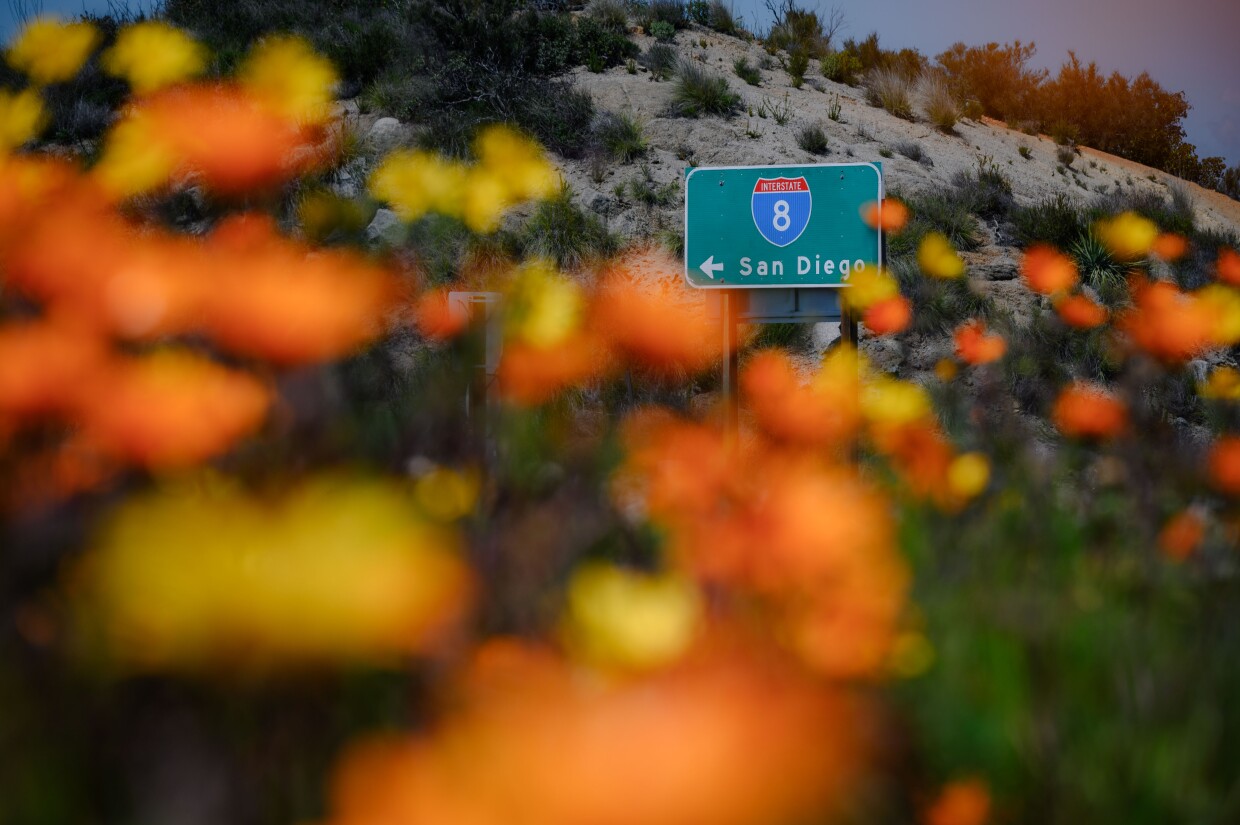As spring arrives, the areas alongside San Diego’s freeways are abloom.
It’s not surprising to see right now. Wildflowers are springing to life across California, with experts seeing early signs of another superbloom – a silver lining of this year’s fierce winter storms.
But the flowers along the freeways aren’t as wild as they might seem. These scattered bursts of color are actually the remnants of a decades-old federal program to seed wildflowers along American interstates.
“It was a mandate,” said Stephen Alvarez, a senior landscape architect at the California Department of Transportation, or Caltrans. “A lot of the flowers that you see are remnants of that era.”
The seeding program was part of an old-school environmental push that began in the 1960s, with the goal of connecting people with nature. The wildflowers also helped control erosion and prevent soil from blocking traffic or clogging rivers and streams.
But the program had its own environmental issues. It relied on a mix of native and non-native flowers, some of which turned out to be destructive. Eventually, federal authorities halted the seeding mandate, and many of the flowers have slowly disappeared.
Now, as California blooms again, the wet winter is breathing new life into what’s left.

The wildflower seeding program began under Lady Bird Johnson, who was first lady from 1963 to 1969. As the U.S. environmental movement grew in strength, Johnson became a fierce advocate for major environmental legislation and conservation of natural areas.
At her urging, the Department of Commerce began a nationwide push to “beautify” freeways across the country.
In California, Alvarez said that meant state authorities were required to set aside a full percent of the budget of any federally-funded freeway project for wildflower seeding.
As the highway system grew, state workers would walk along the sides of the road, scattering the seeds of African daisies, along with native plants like lupins and California poppies.
The plants helped to stabilize the areas alongside the freeways by holding it in place with their root systems.
“It also helps the environment… by keeping our stormwater and our drainage systems clean,” Alvarez said.
As the state’s understanding of ecosystems and environmental science evolved though, Alvarez said the wildflower program became controversial. Some of the flowers they seeded were escaping into wild areas and competing with native plants. Many of the non-native flowers were also less prepared to survive ongoing droughts in a desert climate.


In the 1990s, federal authorities started waiving the requirement for wildflower funding on more projects. Eventually, they wound down the program altogether.
Caltrans continued to seed the freeways. Instead of blending different wildflowers though, the state agency began focusing on native plants and matching the species to the ecosystems around them.
“We got smarter and wiser,” Alvarez said. “They not only survive better, but they're also better for the overall environment.”
Now, San Diego’s freeways are more commonly blanketed by sage and other woody shrubs, along with native grasses and wildflowers like lupins, goldfields and Alvarez’s favorite – the California poppy. He says these native species are just as beautiful in their own way.
The African daisies and other wildflowers of the old program are slowly vanishing, year over year.
But every once in a while, when enough rains come, Alvarez says they bloom again.





